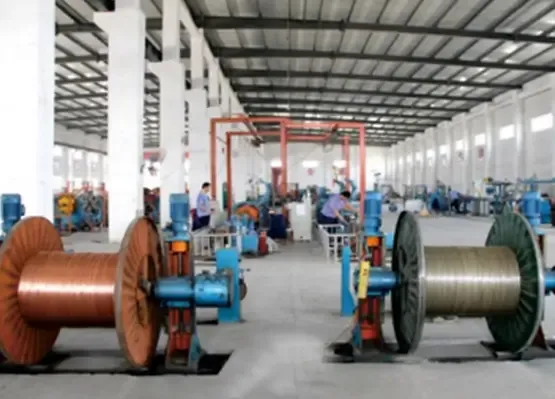พ.ย. . 13, 2024 18:14 Back to list
copper cable wire
Understanding Copper Cable Wire An Essential Element in Modern Technology
Copper cable wire has become an indispensable component in modern communication and electrical systems. Renowned for its excellent conductivity, malleability, and resistance to corrosion, copper is the preferred material used in a variety of applications ranging from residential wiring to telecommunications and data transmission. This article delves into the importance of copper cable wire, exploring its uses, benefits, and the future of this crucial material.
The Significance of Copper in Electrical Applications
Copper's conductive properties have made it a staple in the electrical industry. With a conductivity rating of 59.6 x 10^6 S/m, copper allows electric currents to flow with minimal resistance. This characteristic is especially vital in power distribution and transmission, where efficiency can significantly impact energy costs and system performance. Copper cable wire is commonly used in a variety of applications, including residential, commercial, and industrial wiring.
Moreover, in the telecommunications sector, copper cable wire plays a critical role. Traditional telephone lines consist of twisted pair copper wires, allowing for the transmission of voice signals over long distances. Even in our modern era, where fiber optics are gaining popularity, copper remains a reliable option for short-range communication, especially in scenarios requiring quick installations and lower costs.
Types of Copper Cable Wire
There are various types of copper cable wires, each suited to specific applications
. The most common types include1. Solid Copper Wire This type consists of a single copper conductor and is typically used in applications where rigidity is essential. Solid copper wire is often found in electrical outlets and fixed wiring installations.
2. Stranded Copper Wire Made up of multiple small strands of copper, this wire is more flexible than solid copper wire and is ideal for applications where the wire needs to bend or twist, such as in automotive and appliance wiring.
3. Twisted Pair Cables Used primarily in telecommunications, twisted pair cables consist of pairs of insulated copper wires twisted together to reduce electromagnetic interference. They can be found in both shielded and unshielded configurations.
copper cable wire

4. Coaxial Cable Although more complex, coaxial cable has a central conductor, an insulating layer, and an outer conductor, providing excellent protection against interference. It's widely used for cable television and internet connections.
Advantages of Copper Cable Wire
The benefits of copper cable wire are numerous. Its high conductivity means lower energy loss during transmission, making it an economical choice for power distribution. Additionally, copper's inherent durability and resistance to oxidation ensure longer service life and decreased maintenance needs. This reliability translates into cost savings for both consumers and businesses.
Furthermore, copper is an environmentally friendly choice. Unlike some synthetic materials, copper is highly recyclable. Reclaimed copper can be reused without losing its properties, thus reducing the environmental impact associated with mining and processing new copper.
The Future of Copper Cable Wire
As technology continues to evolve, so too does the demand for efficient and effective wiring solutions. Despite the growing shift toward fiber optic technology, copper cable wire is expected to remain relevant. The fact that many infrastructures are already built on copper systems means that a complete transition to fiber optics would require significant investment and time.
In recent years, there has been increased interest in developing high-performance copper cables that can support the demands of modern data communication. Advances in materials science and manufacturing techniques are leading to the creation of cables that can transmit data at higher speeds while reducing interference.
Conclusion
Copper cable wire plays a crucial role in powering and connecting our modern world. With its superior conductive properties, durability, and economic advantages, it remains a favored choice in various applications. As we look toward the future, the evolution of copper cable technology promises to enhance its effectiveness in an increasingly digital landscape, ensuring that it remains a vital component in electrical and communication systems.
Share
-
Reliable Wafer Type Butterfly Valves for Every IndustryNewsJul.25,2025
-
Reliable Flow Control Begins with the Right Ball Check ValveNewsJul.25,2025
-
Precision Flow Control Starts with Quality ValvesNewsJul.25,2025
-
Industrial Flow Control ReliabilityNewsJul.25,2025
-
Engineered for Efficiency Gate Valves That Power Industrial PerformanceNewsJul.25,2025
-
Empowering Infrastructure Through Quality ManufacturingNewsJul.25,2025